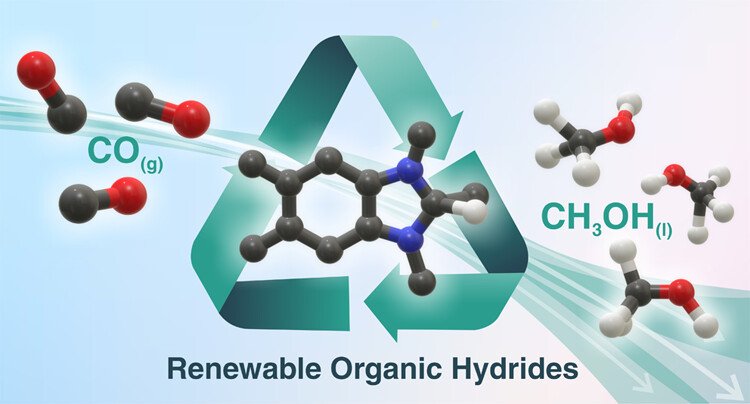Reduction of CO to Methanol with Recyclable Organic Hydrides
The reaction steps for the selective conversion of a transition metal carbonyl complex to a hydroxymethyl complex that releases methanol upon irradiation with visible light have been successfully quantified in acetonitrile solution with dihydrobenzimidazole organic hydride reductants. Dihydrobenzimidazole reductants have been shown to be inactive toward H2 generation in the presence of a wide range of proton sources and have been regenerated electrochemically or photochemically. Specifically, the reaction of cis-[Ru(bpy)2(CO)2]2+ (bpy = 2,2′-bipyridine) with one equivalent of a dihydrobenzimidazole quantitatively yields a formyl complex, cis-[Ru(bpy)2(CO)(CHO)]+, and the corresponding benzimidazolium on a seconds time scale. Kinetic experiments revealed a first-order dependence on the benzimidazole hydride concentration and an unusually large kinetic isotope effect, inconsistent with direct hydride transfer and more likely to occur by an electron transfer-proton-coupled electron transfer (ET−PCET) or related mechanism. Further reduction/protonation of cis-[Ru(bpy)2(CO)(CHO)]+ with two equivalents of the organic hydride yields the hydroxymethyl complex cis-[Ru(bpy)2(CO)(CH2OH)]+. Visible light excitation of cis-[Ru(bpy)2(CO)(CH2OH)]+ in the presence of excess organic hydride was shown to yield free methanol. Identification and quantification of methanol as the sole CO reduction product was confirmed by 1H NMR spectroscopy and gas chromatography. The high selectivity and mild reaction conditions suggest a viable approach for methanol production from CO, and from CO2 through cascade catalysis, with renewable organic hydrides that bear similarities to Nature’s NADPH/NADP+.
Müller, A. V.; Ahmad, S.; Sirlin, J. T.; Ertem, M. Z.; Polyansky, D. E.; Grills, D. C.; Meyer, G. J.; Sampaio, R. N.; Concepcion, J. J. Reduction of CO to Methanol with Recyclable Organic Hydrides. J. Am. Chem. Soc., 2024, 146 (15), 10524-10536. https://doi.org/10.1021/jacs.3c14605

